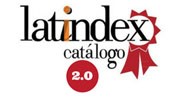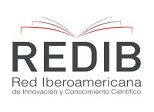Estrés: una Constante Danza Entre la Biología y la Cultura
DOI:
https://doi.org/10.69890/hallazgos21.v3i1.216Palabras clave:
biología/cultura; estrés; interdisciplinario; plasticidad; TEPT.Resumen
Este artículo es una revisión bibliográfica multidisciplinaria sobre el tema estrés, utilizando muchas obras de autores que están en la primera línea de investigación sobre el tema. La palabra estrés, el concepto y la teoría sobre estrés son temas muy importantes de la actualidad y su complejidad trasciende todos los niveles académicos y culturales. La importancia de entender mejor el fenómeno llamado estrés radica en que es parte de la vida diaria de todas las personas de diferentes culturas y que muchas veces tiene consecuencias funestas para la salud de los individuos. Académicamente hablando, hoy más que nunca, se necesita un enfoque interdisciplinario, en el que las explicaciones del comportamiento humano, las estructuras biológicas y los mecanismos fisiológicos se complementen entre sí para identificar y explicar tanto viejas como nuevas formas de fenómenos que afectan a los seres humanos. En consecuencia, el objetivo de este artículo es compartir con los estudiantes y profesores de diversas disciplinas de estudio, el tema del estrés, sus conexiones e implicaciones con la biología y la cultura, y dar rienda suelta a preguntas y respuestas para continuar investigando más profundamente este fenómeno. Este artículo termina con sugerencias de investigación hacia la reducción o eliminación de estrés en la vida cotidiana de las personas de hoy en día.
Citas
California Newsreel with Vital Pictures, Productor., (2008). Unnatural Causes…is
inequality making us sick? Presented by the National Minority Consortia of Public Television Outreach in association with Joint Center Health Policy Institute. Recuperado de: https://unnaturalcauses.org/
Dhabhar, F. S. (2009). Enhancing versus suppressive effects of stress on immune function:
implications for immunoprotection and immunopathology. Neuroimmunomodulation. 16 (5),300–317. Recuperado de: https://www.ncbi.nlm.nih.gov/pmc/articles/PMC2790771/
Epel, E.S., Blackburn, E.H., Lin J., Dhabhar, F.S., Adler, N.E., Morrow, J.D., y Cawthon, R.M.
(2004). Accelerated telomere shortening in response to life stress. Proc Natl Acad Sci U S A. 101(49),17312-5. Recuperado de: https://www.ncbi.nlm.nih.gov/pubmed/15574496
Goosens, K.A., y Sapolsky, R.M. (2007). Stress and Glucocorticoid Contributions to Normal
and Pathological Aging. En D.R. Riddle. (Ed), Brain Aging: Models, Methods, and Mechanism. Chapter 13. Recuperado de https://www.ncbi.nlm.nih.gov/books/NBK3870/
Griffiths, R., Johnson, M., Carducci, M., Umbricht, A., Richards, W., Richards, B., Cosimano
M., y Klinedinst, M. (2016). Psilocybin produces substantial and sustained decreases in depression and anxiety in patients with life-threatening cancer: A randomized double-blind trial. Journal of Psychopharmacology. 30(12) 1181–1197. Recuperado de: http://journals.sagepub.com/doi/pdf/10.1177/0269881116675513
Helman, C. (2007). Cultural aspects of stress and suffering. En Culture Health and Illness
-303. Fifth Edition. Hodder Arnold. London.
Herrera, M. (2008). Milk insufficiency in Esmeraldas, Ecuador: a multidisciplinary approach.
ProQuest UMI Dissertation Publishing.
Herrera, M. (2011). Diez Años Haciendo Investigación en la Ciudad de Esmeraldas, Ecuador:
Experiencia Adquirida. Anuario de Investigación y Desarrollo, 2010-201. Universidad Católica de Esmeraldas, Ecuador: 85-91.
Kirmayer, L., Lemelson, R., y Barad, M., (2007). Understanding Trauma: Integrating
Biological, Clinical, and Cultural Perspectives. 519pp. Cambridge University Press. USA.
Li, Shu-Chen (2003). Biocultural orchestration of developmental plasticity across levels: The
interplay of biology and culture is shaping the mind and behavior across the life span. Psychological Bulletin. 129 (2)171-936.
Lieberman, E., (2013). The Story of the Human Body: Evolution, Health, and Disease. Pantheon Books. 460 pp. New York. USA.
Low, S., (1985). Culturally interpreted symptoms of Culture Bound Syndromes: A cross
Cultural review of nerves. Soc. Sci. Med. 21(2). 187-196.
Martin, J., Hamilton, B., Sutton, P., Ventura, S., Menacker, F., y Munson, M., (2002).
Births: Final Data for 2000. National Vital Statistics Reports. 52, no.10 Hyattsville, Md. National Center for Health Statistics. CDC.
McElroy, A., y Townsend P., (2009). Medical Anthropology in Ecological Perspective. Fifth Edition. 500 pp. Westview Press. USA.
McEwen, B., (2007). Physiology and neurobiology of stress and adaptation: central role of the
brain. Physiol Rev. 87(3):873-90.
McEwen, B., y Lasley E., (2002). The End of Stress As We Know It. Washington, DC: John
Henry Press. 239 pp. USA.
Mullings, L., y Wali, A., (2001). Stress and Resilience: The Social Context of Reproduction in
Central Harlem. New York: Kluwer Academic/Plenum Publishers. 210 pp. USA.
National Center for Post-Traumatic Stress Disorder (2017). Understanding PTSD and PTSD
Treatment. Recuperado de: https://www.ptsd.va.gov/PTSD/public/understanding_ptsd/booklet.pdf
Rice, V., (2000). Theories of Stress and Relationship to Health. Handbook of Stress, Coping,
and Health: Implications for Nursing Research, Theory, and Practice. Sage Publications Inc. 247 pp. USA.
Rodriguez-Ortiz C., y Bermudez-Rattoni F., (2007). Memory Reconsolidation or Updating
Consolidation? En: Bermudez-Rattoni (edi) Neural Plasticity and Memory: From Genes to Brain Imaging. Frontiers in Neuroscience. Chapter 11. Universidad Nacional Autónoma de México. Boca Ratón. USA.
Rosenberger, P., Ickovics, J., Epel, E., Nadler, E., Jokl P., Fulkerson J., Tillie J., y Dhabhar F.,
(2009). Surgical stress-induced immune cell redistribution profiles predict short-term and long-term postsurgical recovery. A prospective study. J Bone Joint Surg Am. 91(12). 2783-94.
Sapolsky, R. (1998). Why Zebras Don’t Get Ulcers: An Updated Guide to Stress, Stress-
Related Diseases, and Coping. Freeman, New York. 434 pp. USA.
Sapolsky, R., (2010, Julio, 28). Under Pressure. Wired Magazine, 18:08. California.
Sarchet, P., (2011, Nov, 12). The Nocebo Effect: Wellcome Trust science writing prize. The
Guardian. Recuperado de: http://www.guardian.co.uk/science/2011/nov/13/nocebo-pain-wellcome-trust-prize
Sternberg, E., (2001). The Balance Within: The Science Connecting Health and Emotions.
W.H. Freeman and Company. New York. 250 pp. USA.
Taber’s Cyclopedic Medical Dictionary (1981). Davis Company, Philadelphia. 1818 PP. USA.
Wilken, R., (2002). The Unified Stress Concept. TrustMark. 19 pp. USA.
Descargas
Publicado
Cómo citar
Número
Sección
Licencia
Los artículos enviados a la Revista Científica Hallazgos21 deberán ser totalmente originales e inéditos.
Los autores son los responsables de los textos y las imágenes incluidas en los artículos y no necesariamente reflejan el pensamiento de la editorial o de la Pontificia Universidad Católica del Ecuador, Sede Esmeraldas (PUCESE).
Los autores disponen cederle a la Revista Científica Hallazgos21 todos los derechos inherentes para la edición, publicación y distribución o divulgación del mismo.
Se autoriza a las revistas firmantes de los acuerdos de Encuentros de Revistas Latinoamericanas para reproducir en parte o totalmente los artículos con la sola mención de la fuente claramente señalada.







